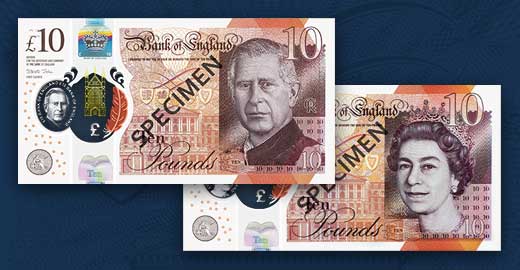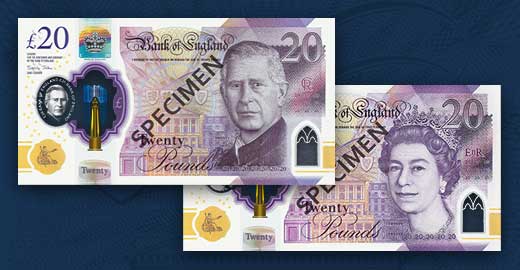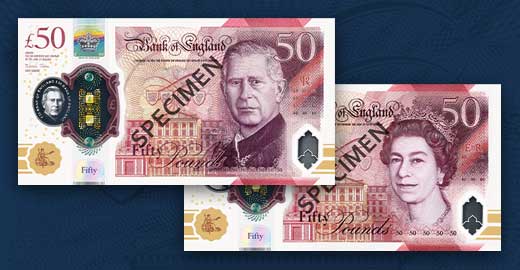26 April 2013
Sir Winston Churchill announced as the face of the polymer £5
13 September 2016
Current £5 note was issued
5 June 2024
Issuance of banknotes featuring the portrait of King Charles III
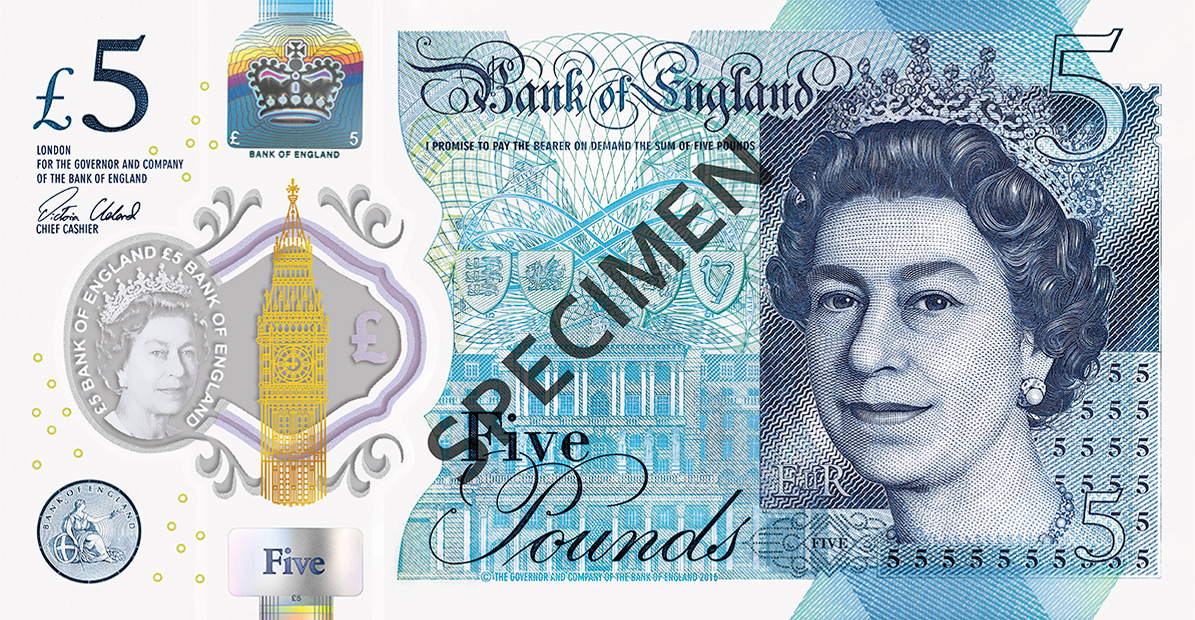
Front of the Queen Elizabeth II note
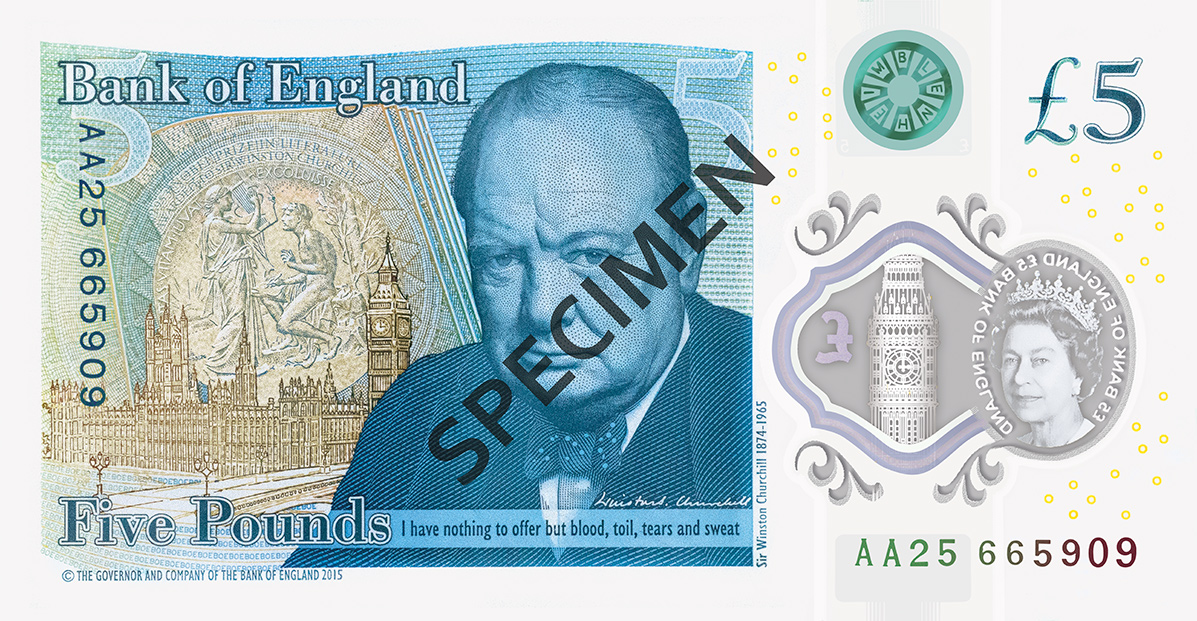
Back of the Queen Elizabeth II note
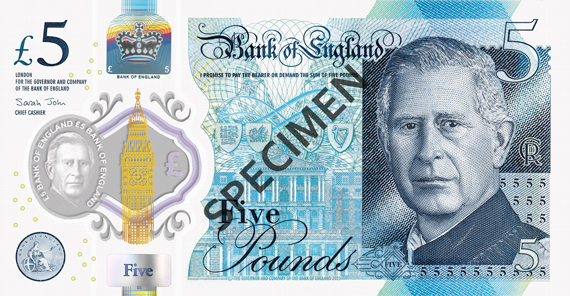
Front of the King Charles III note
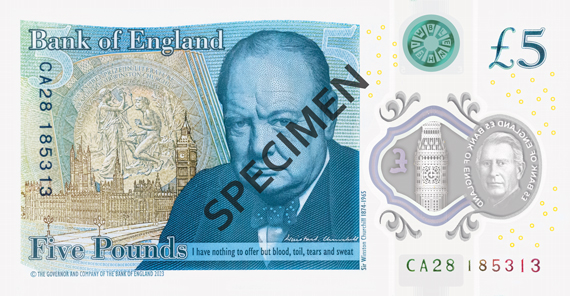
Back of the King Charles III note
Explore our £5 note
Drag the note or use the slider to find out about the features on the note
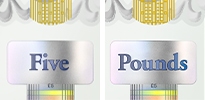
Hologram
The word changes between 'Five' and 'Pounds' when the note is tilted.

See-through window
The foil is gold on the front and silver on the back.

The monarch's portrait
A portrait of the monarch is printed on the window with '£5 Bank of England’ printed twice around the edge.
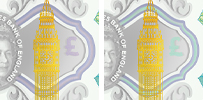
Colour-changing border
The window border changes from purple to green when the note is tilted.
Size
The higher the value of a note, the larger it is. This note is approximately 125mm x 65mm.
Historical character
Sir Winston Churchill's portrait is from a photograph taken in 1941 by Yousuf Karsh.
Artwork
A view of Westminster and the Elizabeth Tower, along with an image of the Nobel Prize medal.
Green foil patch
A circular, green foil patch contains letters spelling, ‘BLENHEIM’
Quote
'I have nothing to offer but blood, toil, tears and sweat' is from Churchill's first speech as Prime Minister.
Signature
Churchill's signature has been licensed for use by Churchill Heritage Limited.
Copyright symbols
The international copyright symbol is on the front and back of the note.
Unique numbering
The numbers and letters in the vertical serial number are all the same height and colour. The horizontal serial number is multi-coloured and increases in height from left to right.
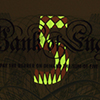
Ultra-violet number
Under ultra-violet light, the number '5' appears in bright red and green, against a duller background.
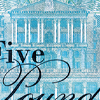
Print quality
The printed lines and colours on the note are sharp, clear and free from smudges or blurred edges.
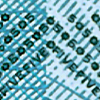
Print quality
The value of the note is written in tiny letters and numbers below the monarch’s portrait. This is visible with a magnifying glass.
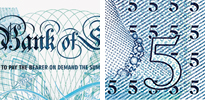
Raised print
You can feel raised print on the words ‘Bank of England’ and in the bottom right corner, around the number '5'.

Silver foil patch
A silver foil patch contains a 3D image of the coronation crown.
Key security features
Focus on these two key security features to help confirm that your notes are genuine:
Hologram image change

Tilt the note from side to side. Check the words change between 'Five' and 'Pounds'.
See-through window

Look at the metallic image over the window. Check the foil is gold on the front of the note and silver on the back.
Other security features
Green foil patch

A circular, green foil patch contains letters spelling, ‘BLENHEIM’. You will find this on the back of the note, directly behind the silver crown on the front of the note.
The monarch's portrait in the see-through window

A portrait of Queen Elizabeth II or King Charles III is printed on the window with '£5 Bank of England’ printed twice around the edge.
Colour-changing border

When you tilt the note, a coloured border around the edge of the see-through window will change from purple to green. The '£' symbol in the window changes from purple to green.
Silver foil patch
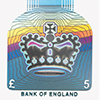
A silver foil patch contains a 3D image of the coronation crown. You will find this above the see-through window on the front of the note.
Feel of polymer and raised print
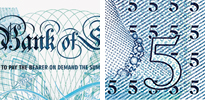
The note is printed on polymer, which is a thin and flexible plastic material. On the front of the note, you can feel raised print. For example, on the words ‘Bank of England’ and in the bottom right corner, around the number '5'.
Print quality

The printed lines and colours on the note are sharp, clear and free from smudges or blurred edges. If you use a magnifying glass, you will see the value of the note written in small letters and numbers below the monarch's portrait.
Ultraviolet number

Under a good quality ultra-violet light, the number '5' appears in bright red and green on the front of the note, against a duller background.
Design features
Tactile feature
The £5 note is the only polymer note without a tactile feature in the top left hand corner. The absence of a tactile feature helps blind and partially sighted people identify the value of the note.
Size
The higher the value of a note, the larger it is. This note is approximately 125mm x 65mm.
Unique numbering
A unique serial number is printed horizontally and vertically on the back of the note. The horizontal number is in the bottom right corner. It is made up of multi-coloured letters and numbers, which increase in height from left to right. The vertical number runs down the left-hand side and the numbers and letters are the same height and colour.
Copyright symbols
The international copyright symbol is included on the front and back of the note, below the ‘Five Pounds’ text.
Historical character
Sir Winston Churchill was one of the greatest statesmen of all time and Prime Minister of the United Kingdom from 1940-1945 and 1951-1955. Churchill was also a writer and an artist and is the only Prime Minister to win the Nobel Prize for literature in 1953.
Artwork
The images on the back of the note show a view of Westminster, home of the UK government, and the Elizabeth Tower (containing Big Ben) from London’s South Bank, looking across Westminster Bridge. Also shown in the background image is the Nobel Prize medal, which Churchill was awarded in 1953, together with the wording of the prize citation.
Quote
‘I have nothing to offer but blood, toil, tears and sweat'. This is from Churchill's first speech on 13 May 1940 to the House of Commons after having been offered the King's commission the previous Friday, to become Prime Minister of the United Kingdom in the first year of World War II.
Signature
Churchill's signature has been licensed for use by Churchill Heritage Limited.
Resources
Download our free education materials to help check your banknotes.
You can also order our free education materials online:
Watch our short film showing the key security features on the £5 note
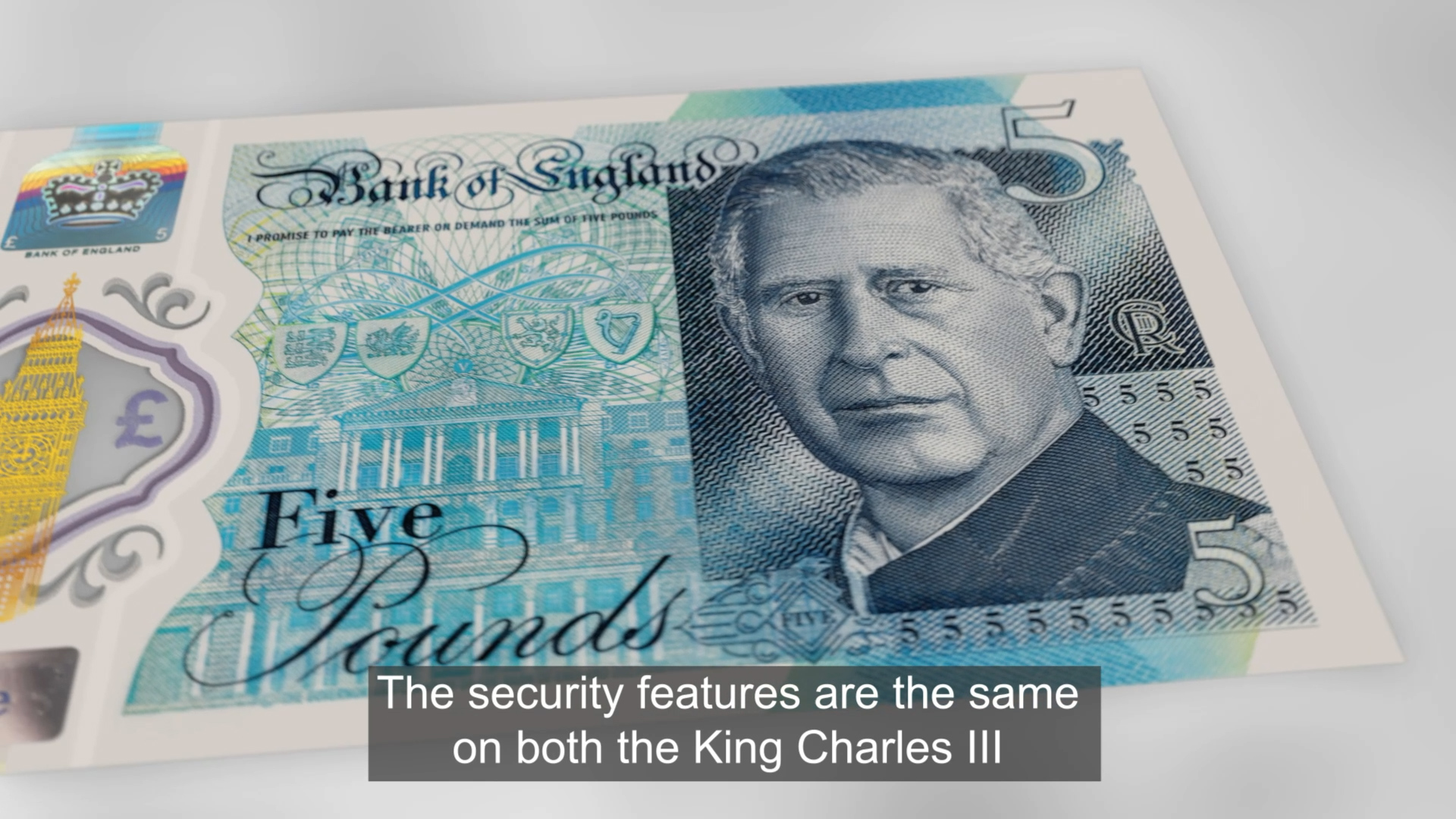
Exchanging old notes
This note replaces our paper £5 note which was withdrawn from circulation on 5 May 2017.
You may be able to deposit withdrawn notes at your own bank or with the Post Office. Alternatively, you can exchange withdrawn banknotes with selected Post Office branches or with the Bank of England. There is no deadline to exchange old banknotes with the Bank of England.

